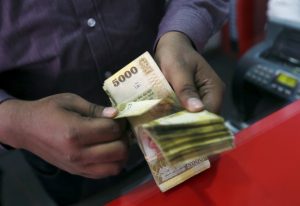The Reserve Bank of New Zealand (RBNZ) raised interest rates by a hefty 50 basis points to 1.5% on Wednesday, its fourth increase in a row as it seeks to reduce second-round effects from sharply rising inflation.
All 21 economists in a Reuters poll had expected the RBNZ to raise the official cash rate (OCR), but only six had forecast a 50 basis-point move. The rest had expected a 25 basis point increase, while financial markets were fully priced for the larger rise.
The central bank said in a statement the 50 basis point move, which was its biggest rate increase in more than 20 years, was intended to take the cash rate to a more neutral stance and reduce the risk of rising inflation expectations.
“A larger move now also provides more policy flexibility ahead in light of the highly uncertain global economic environment,” the statement said.
The RBNZ has been one of the most aggressive central banks in rolling back stimulus as policymakers sought to get on top of a red-hot housing market and soaring inflation.
“We now expect the OCR to end the year at 2.5%, higher than the bank’s neutral rate, with another 50bp hike when the bank meets in May,” Shreya Sodhani, the Barclays analyst in Singapore, said.
However, the nation is only now facing the worst of the Covid-19 pandemic, as the Omicron cases sweep through the population amid a relaxation of rules.
‘Path of Least Regret’
The minutes of the central bank meeting said the board members agreed that their policy “path of least regret” is to increase the OCR by more now, rather than later, to head off rising inflation expectations and minimise any unnecessary volatility in output, interest rates, and the exchange rate in the future.
The members were also of the view that the cash rate was still stimulatory at its current level.
Imre Speizer, head of NZ markets strategy at Westpac, said it was not an overly hawkish outcome given what the market had been pricing.
“The key point is that they have signalled that the OCR track remains about the same. This is only moderately hawkish, the currency can go up a little bit,” he said.
Following the RBNZ decision, the kiwi dollar added 0.5% to $0.6885, but remained well short of its recent five-month high of $0.7034.
The central bank is facing opposing challenges. House prices are falling and business and consumer confidence is taking a hammering. Yet at the same time inflation is high and the employment rate is low.
There are also other challenges for New Zealand as the Omicron variant of Covid-19 cases remain high and the Ukraine war threatens to undermine global growth while further heightening inflationary pressures.
- Reuters, with additional editing by George Russell
READ MORE:
Air New Zealand to Recapitalise as Strict Travel Curbs Eased
New Zealand Media Firm NZME Seeks Google Content Deal
Slowing China Demand Hits New Zealand’s a2 Milk Profit
























